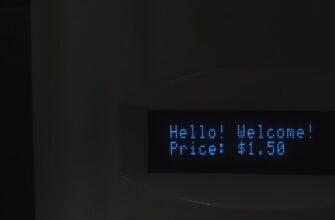Unlock Flexible Yield on Your SOL with Aave
Depositing SOL on Aave Flexible offers crypto holders a powerful way to earn passive income while maintaining liquidity. Unlike traditional staking that locks assets, Aave’s “flexible” approach lets you deposit Solana (SOL) to generate yield through lending markets while keeping funds accessible for withdrawals or collateral. This guide breaks down how to safely deposit SOL on Aave, optimize returns, and navigate this innovative DeFi strategy.
What Is Aave Flexible Deposit?
Aave Flexible Deposit refers to supplying assets to Aave’s non-custodial liquidity pools without fixed lock-up periods. When you deposit SOL:
- Receive aTokens: Get interest-bearing aSOL tokens representing your deposit
- Earn Real-Time Yield: Accrue interest from borrowers instantly
- Maintain Liquidity: Withdraw anytime or use aSOL as collateral for loans
- No Minimum Duration: Avoid commitment periods common in staking
Why Deposit SOL on Aave?
Flexible SOL deposits solve key pain points for investors:
- Higher Yield Potential: Often outperforms traditional SOL staking APY
- Capital Efficiency: Use deposited SOL as collateral for leveraged strategies
- DeFi Integration: Seamlessly use aSOL across Ethereum-based protocols
- Hedge Against Volatility: Earn yield during market downturns
Step-by-Step: How to Deposit SOL on Aave
- Bridge SOL to Ethereum: Use a cross-chain bridge (e.g., Wormhole, Allbridge) to convert SOL to wrapped SOL (wSOL) on Ethereum
- Connect Wallet: Link your Web3 wallet (MetaMask, Coinbase Wallet) to app.aave.com
- Select wSOL Asset: Navigate to “Supply Markets” and choose wSOL
- Approve & Deposit: Authorize the contract and specify deposit amount
- Receive aSOL: Your aSOL tokens appear in your wallet, accruing interest immediately
Pro Tip: Enable “Stable Rate” in settings for predictable returns during volatility.
Maximizing Your SOL Deposit Strategy
- Leverage Yield Stacking: Use aSOL as collateral to borrow stablecoins, then reinvest
- Monitor APY Fluctuations: Aave rates change based on pool utilization – track via DeFi Llama
- Combine with Safety Nets: Set up health factor alerts to avoid liquidation risks
- Gas Optimization : Deposit during low Ethereum network congestion (check GasNow)
Critical Risks to Consider
While lucrative, SOL deposits carry inherent DeFi risks:
- Smart Contract Vulnerabilities: Audited but not risk-free
- Impermanent Loss: If wSOL/SOL peg fluctuates significantly
- Liquidation Exposure: When using aSOL as collateral
- Bridge Risks: Cross-chain transfers add counterparty risk
Always practice risk management: start small, diversify, and never deposit emergency funds.
FAQ: Depositing SOL on Aave Flexible
Q: Can I deposit native SOL directly on Aave?
A: No. You must bridge SOL to Ethereum as wSOL first due to cross-chain limitations.
Q: What’s the minimum SOL deposit?
A: No minimum, but consider Ethereum gas fees ($5-$50) which make small deposits inefficient.
Q: How often is interest paid?
A: Continuously! Your aSOL balance increases every Ethereum block (~12 seconds).
Q: Can I lose my SOL on Aave?
A: Only if used as collateral for loans and your position gets liquidated. Pure deposits aren’t at risk.
Q: Is Aave Flexible better than Solana staking?
A: It offers more liquidity and composability but involves bridging risks. Compare APYs on DeFiRate.
Final Thoughts
Depositing SOL on Aave Flexible unlocks unprecedented liquidity-earning opportunities for Solana holders. By converting SOL to wSOL and supplying it to Aave’s Ethereum pools, you tap into decentralized lending yields while preserving flexibility. Always verify contract addresses, monitor market conditions, and prioritize security to make your SOL work smarter in the DeFi ecosystem.








